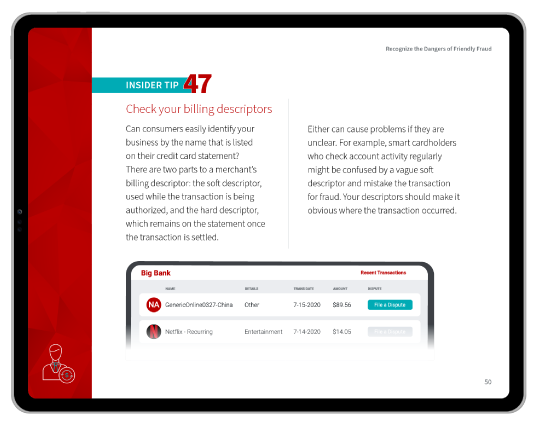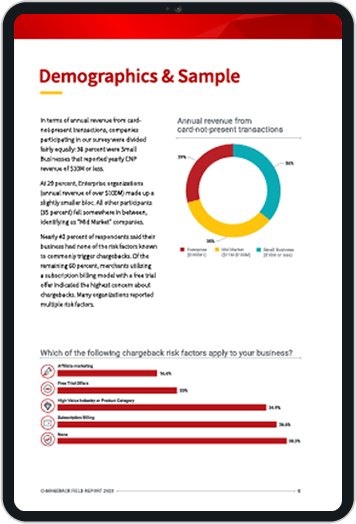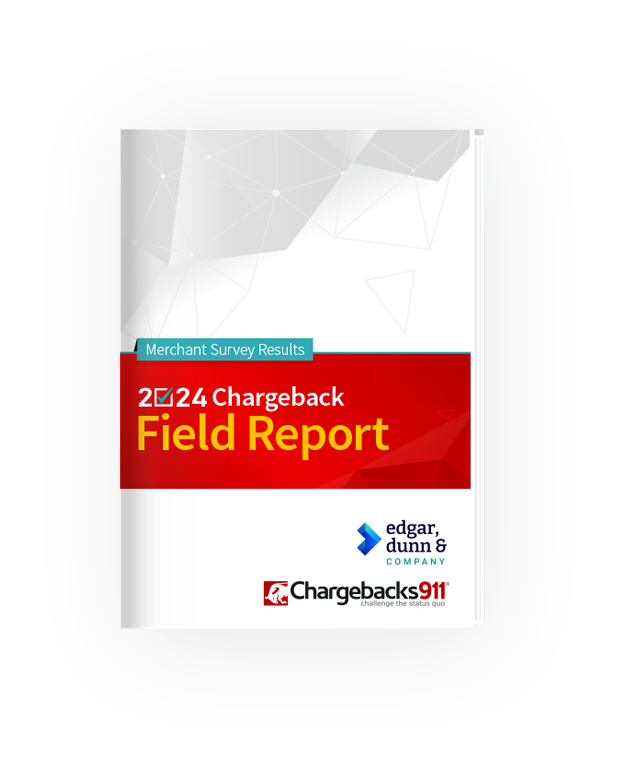The eCommerce Merchant’s Guide to AI Fraud Detection Tools
In the first three quarters of 2024, technology juggernauts spent a staggering $170 billion on artificial intelligence technologies.
As AI-enabled chatbots, research tools, coding assistants, and more find their way to mass adoption, they’re disrupting consumer buying patterns and making businesses more productive. On the flip side, fraudsters are co-opting AI tools for nefarious purposes.
A 2024 report by BioCatch reveals that 69% of surveyed respondents say that criminals are better at using AI for financial crimes than banks are using the technology to prevent fraud. Needless to say, businesses and merchants will need to step up and become more tech-savvy if they want to beat scammers at their own game.
Recommended reading
- What is Mastercard SecureCode? Here’s How it Works
- Reverse Email Lookup: Tips, Tools & How to Detect Fraud
- ECI Indicators: How to Understand 3DS Response Codes
- How Device Fingerprinting Works: Use Cases, Trends & More
- CVV2: How it Works | Rules & What Comes Next
- How to Detect Fraud: Top 20 Tips to Stop eCommerce Scams
What is AI Fraud Detection?
AI fraud detection refers to the use of machine learning technologies to analyze large volumes of transaction data in real-time to identify and prevent fraud.
Once deployed, AI-enabled fraud detection systems can harness proprietary data to learn and adapt continuously to a merchant’s business environment.
By identifying trends and screening for outliers, these tools can distinguish between normal and abnormal buying behavior with ever-increasing accuracy. When deployed at checkout, these capabilities enable AI fraud prevention tools to block high-risk transactions that could otherwise turn into invalid chargebacks or fraudulent refunds.
AI fraud detection tools are built and refined through a multi-step process beginning with data collection. Large quantities of refined information, known as training data, are used to build “out-of-the-box” anti-fraud AI solutions that are sold to merchants.
Once integrated into a merchant’s checkout environment, AI-enabled fraud detection systems can learn and tweak themselves using live test data. Transaction histories, device details, customer spending patterns, and other data points help establish what is “normal” for a particular merchant.
Other machine learning techniques, like unsupervised learning, do not make a distinction between training and test data and can be deployed from the outset.
How Does AI Fraud Detection Work?
AI fraud detection tools work by parsing large amounts of data, detecting patterns to determine what is “normal,” then flagging any behaviors or incidents that do not fit into the “normal” pattern.
The technology defines typical behaviors over time via pattern and trend recognition. In other words, AI fraud prevention tools catch fraud by closely monitoring what isn’t fraudulent — anything that lies outside what the system regards as normal is flagged as potential fraud.
Fraud usually manifests as a pattern of highly abnormal, outlier activity. In the context of eCommerce, this could mean:
- Unusually high or low transaction dollar value
- Multiple failed logins
- Repeat transactions submitted in rapid succession
- Unexpected account or password changes
- Purchases from unusual locations
AI fraud detection tools assign risk scores to every transaction. Those with risk scores above a certain threshold are blocked or forwarded to human fraud analysts for manual review, while those with lower risk scores are deemed to be legitimate and are allowed to proceed. Some AI fraud systems may also be programmed to issue multi-factor authentication challenges to transactions with “moderate” risk results, rather than blocking them outright.
Use Cases for AI Fraud Detection
What constitutes “fraud” can vary widely. Financial institutions contend with wire fraud, counterfeiting, and money laundering, while B2C retailers deal with account takeover, refund scams, and friendly fraud.
The commonality underlying all fraud is that it presents certain anomalous “red flags,” no matter its form. This makes AI, which is skilled at recognizing patterns and deviations, particularly effective when it comes to fraud detection. Here’s how it can be deployed in practice:
Banks can also use AI systems beyond a fraud prevention context. For example, lenders can use AI to evaluate a prospective borrower’s creditworthiness, help credit analysts underwrite loans, and make decisions on whether to extend or withhold credit.
Will AI Replace Data Analysts for Fraud Detection?
No, human expertise and oversight is still necessary. Rather, AI tools should be used alongside human analysts to make them more efficient and allow for more complex and accurate work.
Although AI is advancing at breakneck speed, these fraud detection tools can’t remove human expertise from the equation.
AI functions best as a companion to data analysts. By automating routine roles such as anomaly detection, it frees human specialists from the drudgery of nonstop monitoring. It also allows fraud experts to tackle more complex tasks that involve judgement and manual review.
AI fraud detection tools will make data analysts more efficient, without replacing them. For example, these systems can sift through large volumes of transaction data almost instantly. That means fraud teams no longer have to rely on small samples of data sets; they can now analyze 100% of transactions that occur.
Human expertise will remain crucial when it comes to minimizing and correcting biases inherent in AI models. Fraud-related insights generated by AI detection systems, gray areas that require external evidence, and other model outputs that are subject to interpretation will require informed input from human fraud teams.
Finally, training and testing data contain sensitive details and must be handled with care — something AI systems can’t do alone. Data analysts will thus continue to play a crucial role in ensuring PCI compliance, plus compliance with data regulations like the GDPR in the European Union.
Why Invest in AI Fraud Detection?
Fraudulent activity is increasing in volume, velocity and sophistication. Once-effective methods of fraud detection are quickly going obsolete.
AI systems are cost-effective from an investment standpoint, especially at scale. Analyzing a million data points with an AI tool may cost merchants roughly the same amount as analyzing a thousand data points, even though the former represents 1,000 times more data.
Beyond that, AI models have a unique ability to adapt to evolving fraud tactics. They can become more effective and accurate in detecting patterns over time. Once deployed, merchants can customize their models to focus on specific fraud indicators which, in contrast to traditional solutions, enables a much more bespoke and targeted approach to fraud prevention.
AI fraud detection can also make the checkout process faster and more seamless. AI tools can engage in rapid and highly accurate decisioning. This means merchants can protect themselves without introducing additional friction for customers. This could lead to more repeat orders, higher average order volumes, and more revenue.
The US Treasury Department announced that its machine learning-based “enhanced fraud detection processes” saved the agency an estimated $4 billion in 2024.
How Can You Build an AI Fraud Detection Strategy? Here’s a Five-Step Roadmap.
To align profit-and-loss goals with anti-fraud priorities, businesses need a comprehensive fraud detection strategy that makes the most of AI’s capabilities.
Looking to develop a strategy like this? I recommend that you:
Develop a Written Plan Following Cross-Functional Input
To start, outline your objectives for AI fraud detection in writing. Disseminate the plan among IT, operations, finance, and procurement, and secure buy-in from decision makers. A good plan should specify fraud prevention goals —like curbing account takeover fraud, reducing chargebacks, or minimizing return abuse — without losing sight of business objectives.
You need to challenge assumptions and ask difficult questions. For example, how will the AI tool demonstrate ROI? How will costs and savings be measured? Which threats are most pressing? How will customers and revenue be impacted once the system is deployed?
Source & Deploy an AI Model
Next, decide whether you intend to build an in-house AI model, or purchase one from a vendor. Unless you’ve got deep pockets — like an enterprise-level outfit or a government agency — you’ll probably be looking to buy, rather than build.
Deploy the model on live test data, and regularly review its performance and fine-tune it so that it improves in accuracy and is able to detect new fraud patterns. Integrate the AI model with existing fraud detection systems, and regularly solicit recommendations and advice from fraud and data analysts.
Address Data Privacy Concerns
Also worth addressing are industry regulations or privacy concerns.
Using an AI model to assess transaction data does not come without the prospect of misuse, or the resulting consequences. Businesses must take steps to protect customer data and ensure that fraud decisions do not result in significant biases or false positives. And, that all data used to train the model is secure and non-invasive in nature.
Iterate & Seek Constant Improvement
Deploying the AI model is, of course, just the beginning. You have to regularly monitor the model’s performance, and benchmark it against quantitative and qualitative factors. If a tool does not perform as expected, or if it does not improve rapidly enough, do not be afraid to replace it.
Fraud detection is one arena where “good enough” is not good enough. Here, optimization matters — every last instance of fraud is worth combatting.
Prioritize Fraud Awareness
Finally: don’t neglect the human element.
Fraud is ultimately committed and prevented by humans. So, ensure that staff, vendors, and customers are fraud-aware and practice healthy digital hygiene. For example, encourage strong passwords, mandate that employees use multi-factor authentication when logging in, and encourage customers to do the same.
AI is a Good Start. What’s Next?
While AI can be a powerful tool in the fight against fraud, businesses who wish to keep scammers at bay need to embrace a nuanced and multifaceted approach.
“But,” I hear you say, “I don’t have the bandwidth or know-how to implement an AI-based fraud prevention strategy from start to finish. What should I do?” This is where the industry experts come in.
At Chargebacks911®, for instance, our customizable and comprehensive solutions help merchants mitigate chargebacks and fraud risks effortlessly and effectively. Get in touch with us for a free, no-obligation ROI analysis today.
FAQs
What is the best AI model for fraud detection?
It’s tough to pinpoint a single “best” AI model for fraud detection. That said, random forest models, autoencoders, local outlier factor, and K-nearest neighbor algorithms show promise in anomaly and fraud detection.
What type of AI is used in cyber security?
Machine learning, natural language processing, and neural networks are most commonly used in cybersecurity contexts to detect unusual patterns, identify forgeries, and make fraud-based decisions.
How is AI used in fraud investigations?
AI is adept at investigating fraud because it excels at anomaly detection. This involves identifying outlier activity, which fraud often manifests itself as, within large datasets.
How do I use data to detect fraud?
To use data to detect fraud, you’ll need to start with a large quantity of data. Next, deploy a machine learning algorithm to identify patterns and trends in the data, and sift out the anomalies. These outliers are potential instances of fraud, which you can then confirm by manually examining the flagged data along with information in other datasets















